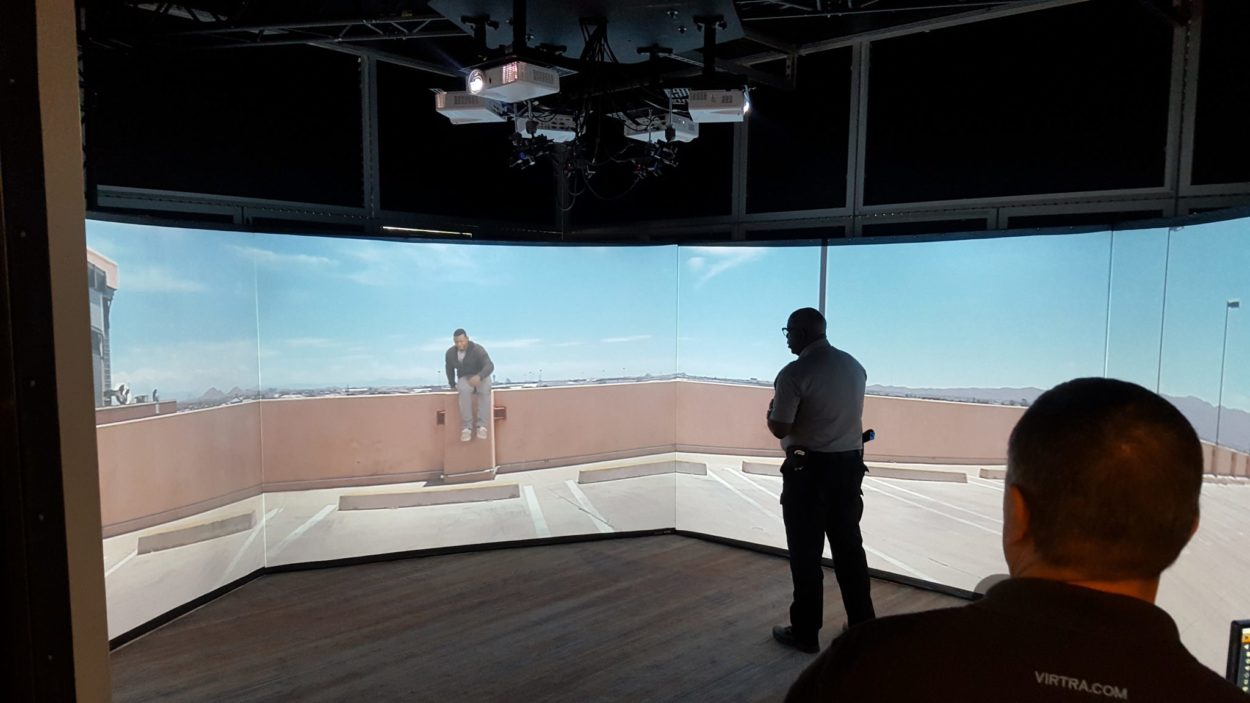
In today’s day and age, information is at everyone’s fingertips thanks to the internet and social media. Because of this, police officers are constantly under scrutiny for their actions, even in life-or-death situations. Many police departments have turned to virtual reality and Judgmental Use of Force training simulators in order to help better train officers for real-world scenarios. With these systems, officers can better learn when to use force.
Real-World Scenarios
Judgmental use of force training simulators like the VirTra V-300 give officers the opportunity to experience a variety of scenarios they may encounter in the real world, but without the inherent dangers. For example, unlike many of the simulators in the past, including firearms training simulators, VirTra gives officers the ability to participate in multi-incident scenarios. In real life, most dangerous encounters are not simply one incident – these encounters consist of many different incidents with multiple confrontations as active threats at the same time on multiple screens. The results and outcomes vary based on the officer’s decisions, and with VirTra, officers can see how their decisions might impact the scenario.
Training for Multiple Situations
When a police officer puts on his or her badge or uniform before a shift, he or she has no idea what may happen that day. In order to properly protect and serve, these officers must be prepared to handle anything that comes their way. That’s why VirTra, which consists of anything from single-screen to 300-degree wrap-around use of force simulator loaded with real-life scenarios, takes almost any situation into account. For example, officers can receive judgmental use of force training for any of the following scenarios:
- Ambushes – Officers can learn when to use force if they are ambushed in the field. Often, it is difficult for officers to make spur-of-the-moment choices when they are taken by surprise, so this type of training is invaluable.
- Active Shooters – Active shooting situations are intense, and learning when to use force and when to wait can be tricky. There are numerous active shooter scenarios included with the judgmental use of force training simulator.
- Low-Light Searches – Police officers don’t always have the luxury of a well-lit encounter, so judgmental use of force training also helps officers learn to search for, control, and even apprehend suspects in low lighting.
- Suspect Control – The training simulators assist officers in learning proper suspect control, both with and without use of force.
Real Firearms Training Simulation
Today’s police & military training simulators go above and beyond traditional firearms training systems by making the experiences and encounters as realistic and lifelike as possible. Realistic scenarios are important, but so are realistic firearms. Judgmental use of force training simulators allow officers to use CO2 firearms, and they even provide true-to-life recoil. Officers who use the simulator regularly will better understand what to expect from a variety of firearms, which include shotguns, rifles, and pistols. Aside from this, officers can learn when to use Axon® TASERs® and OC rather than lethal force.
Law enforcement officials and police officers alike can benefit from judgmental use of force training in several unique ways. In the end, it’s about making situations these officers may encounter on the job feel like second nature. A well-trained officer is better equipped to protect, serve, and make the best possible choices in every possible situation.
Recently Published
Join Our Newsletter







